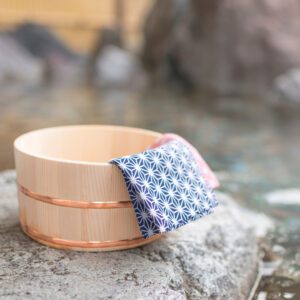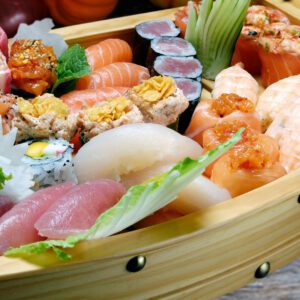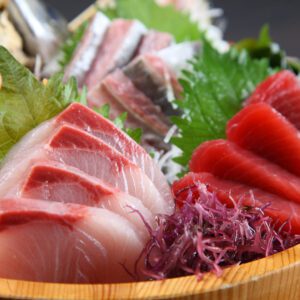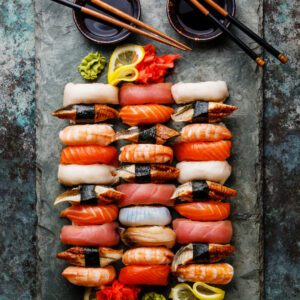How to create a Japanese itinerary that won’t fail No.2
Table of contents
1.The method of “narrowing down the options” to eliminate “uncertainty”
2.Narrowing down of travel destinations by “season of fish and shellfish”
3.How to narrow down by “seafood season”
1.The method of “narrowing down the options” to eliminate “uncertainty”
This time, we will introduce the method of “narrowing down the options” to eliminate “uncertainty”.
Of course, how to narrow down your travel destination options depends on your interests. People who want to go to a specific place such as a theme park are not eligible here because they have narrowed down their travel destinations from the beginning. Here are some ways to help more people. It is a methodology for those who vaguely want to go on a trip.
How do you decide where to travel? I think that you choose your travel destination from various perspectives, such as the tourist destination you want to go to, the hot springs you want to go to, the hotel / ryokan you want to go to, and the food you want to eat. However, we pointed out last time that there are many travelers in Japan and around the world who are in trouble because there are too many choices.

For example, there are 3,155 hot springs in Japan (2015 statistics: Ministry of the Environment). Even if you say “I want to go to a hot spring”, it is unrealistic to consider all the options.

2.Narrowing down of travel destinations by “season of fish and shellfish”
So what do you think is the method of narrowing down the travel destinations that we are practicing? As we introduced before, it is a narrowing down of travel destinations by “season of fish and shellfish”. Narrowing down by “seafood season” is disadvantageous for inland tourist destinations. However, we can eliminate the disadvantages of the inland area by narrowing down the destinations in the coastal area and then visiting the nearby inland tourist destinations. In addition, we would like to narrow down the seasons of “vegetables” and “fruits” so that the disadvantages of the inland area will disappear after the narrowing down of fish and shellfish by season has been completed.

Then, we will explain why I thought that narrowing down by “season of fish and shellfish” was effective. Details will be described later, but in conclusion, (1) “fish and shellfish” is of great interest to many people when traveling in Japan, (2) it is possible to narrow down to seasons and regions, so it is possible to greatly narrow down travel destinations, and (3) It is estimated that there are few travelers who decide the destination based on the season of fish and shellfish, so the tourist spots are not crowded.
First of all, there are many travelers who mention “food” as the purpose of traveling in Japan. According to a survey of foreign tourists visiting Japan in 2019 (Japan Tourism Agency), the number one expectation before visiting Japan was “eating Japanese food” at 27.6%, and the second place was “sightseeing in nature and scenic spots”. 14.2%, and the third place was “shopping” 11.3%.
According to a survey (JTB Annual Travel Report 2020) that Japanese people were “most looking forward to” when traveling domestically, “eating delicious food” was ranked first with 18.7%. Below, 2nd place is “bathing in the hot springs” 15.4%, and 3rd place is “seeing the natural scenery” 12.2%.

Therefore, in order to provide travel information in Japan, we thought that “food” would be the most interesting for both foreigners and Japanese.
Judging what kind of “food” you are interested in, we think that “fish and shellfish” cannot be excluded. When asked by visitors to Japan about “the most satisfying food and drink,” the first place was “meat dishes” (27.5%), the second place was “ramen” (19.7%), the third place was “sushi” (14.5%), and the fourth place was “fish dishes”(12.7%) by Japan Tourism Agency. The total of sushi and fish dishes is 27.3%, which is equivalent to the number one meat dish.
In addition, the reasons for eating and drinking that visitors to Japan were most satisfied with (multiple answers) were also interesting, as shown below. The 1st place was “delicious” 93.0%, the 2nd place was “fresh ingredients” 45.4%, and the 3rd place was “traditional / unique to Japan” 24.4%. Aside from the 1st place “delicious”, the 2nd and 3rd place answers can be regarded as “seafood” to some extent.
In a survey for Japanese people, we do not know which food “eating delicious food” refers to. However, looking at the surveys by prefecture, it is estimated that there is a high level of interest in “seafood.”
For Japanese people, “eating delicious food” was the number one “most looking forward to” in domestic travel (18.7%), but when traveling to inland prefectures, interest in “eating delicious food” declined. The number of respondents who cited “eating delicious food” as “most looking forward to” was below the national average of 18.7% in all eight inland prefectures like below Nagano (8.1%), Gunma (9.7%), Nara (10.2%), Yamanashi (10.5%), Shiga (12.7%), Tochigi (12.8%), Gifu (16.0%), Saitama (17.9%). Therefore, it can be said that many travelers assume “fish and shellfish” for “eating delicious food” at domestic travel destinations.

3.How to narrow down by “seafood season”
Then, we will explain how to narrow down by “seafood season”. First, we investigated the seasons and prefectural catches of 87 types of fish and shellfish, which have relatively high catches. The top 5 prefectures in terms of the catch of each fish and shellfish earn 1 point in the month of the season for that fish and shellfish. For example, Hokkaido, Aomori, Iwate, Miyagi, and Akita prefectures, which are the top five salmon catches, earn 1 point each during the salmon season from September to November. By adding up the calculated points in this way, the prefecture ranking for each month is created. As a result, it became clear when and where to go to eat more kinds of fish and shellfish.

After that, a travel route will be created by selecting nearby tourist destinations in the narrowed prefectures. The following information is also used as a reference when creating this route. Information on 282 types of “PRIDE FISH” (selected by Japan Fisheries Cooperatives), which has a smaller catch than the 87 types we surveyed, and 23 types of “100 selections of local dishes” and “local dishes loved by the nation” by the Ministry of Agriculture, Forestry and Fisheries. Etc. A comprehensive analysis of these food information is intended to increase the probability of eating more delicious food.
Next time, we will show you how to choose a tourist destination. It is finally “elimination of uncertainty”.
